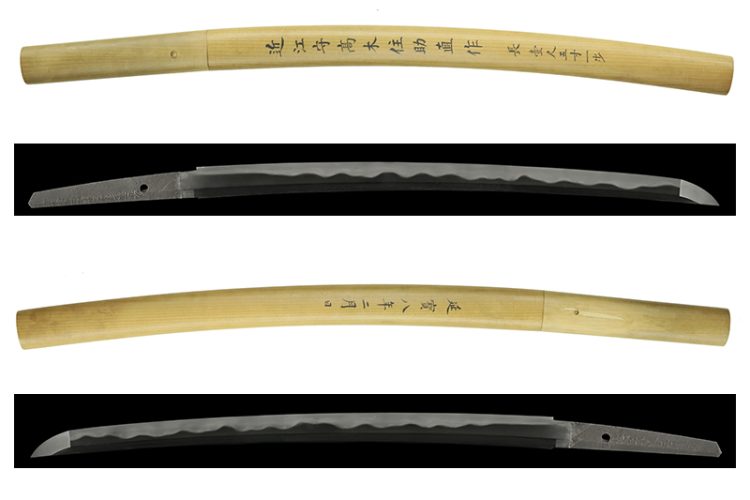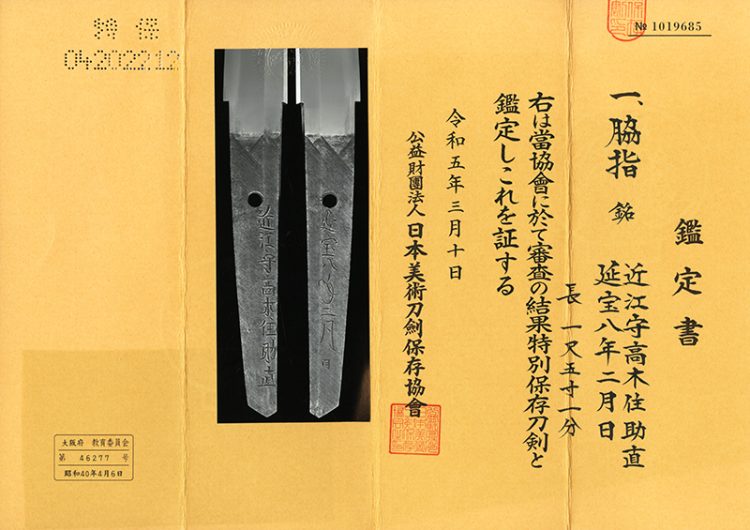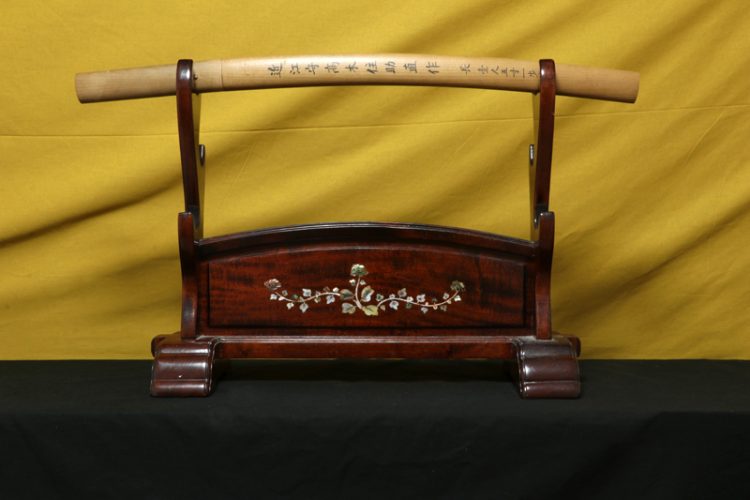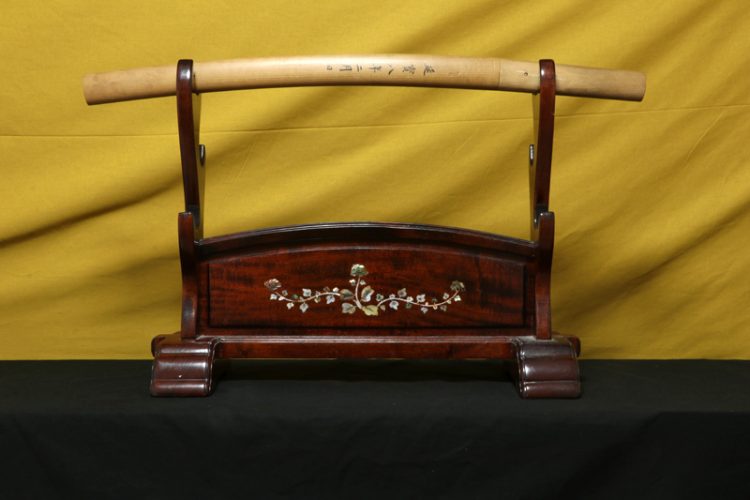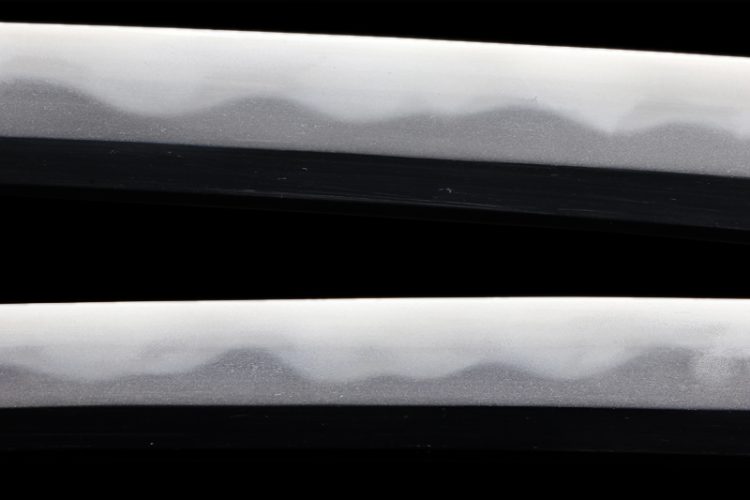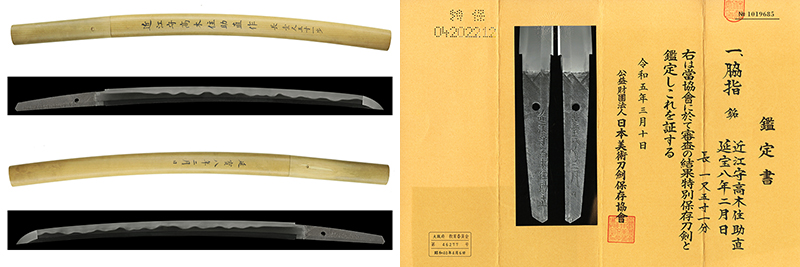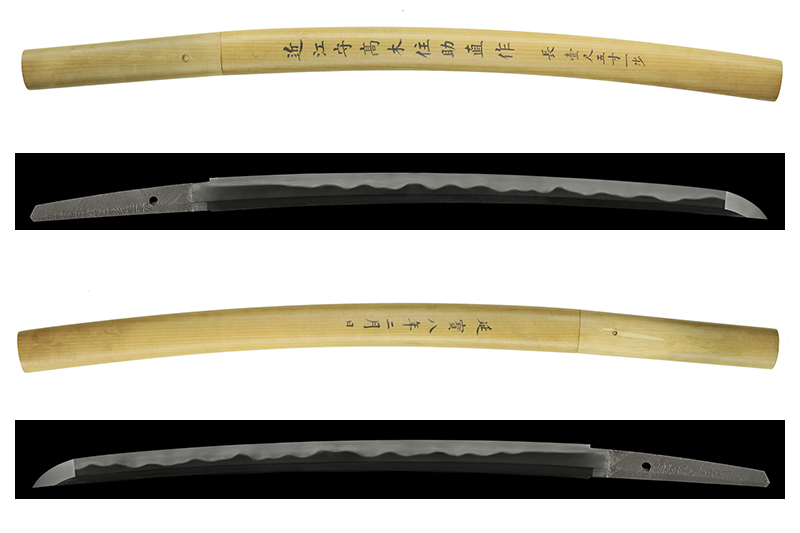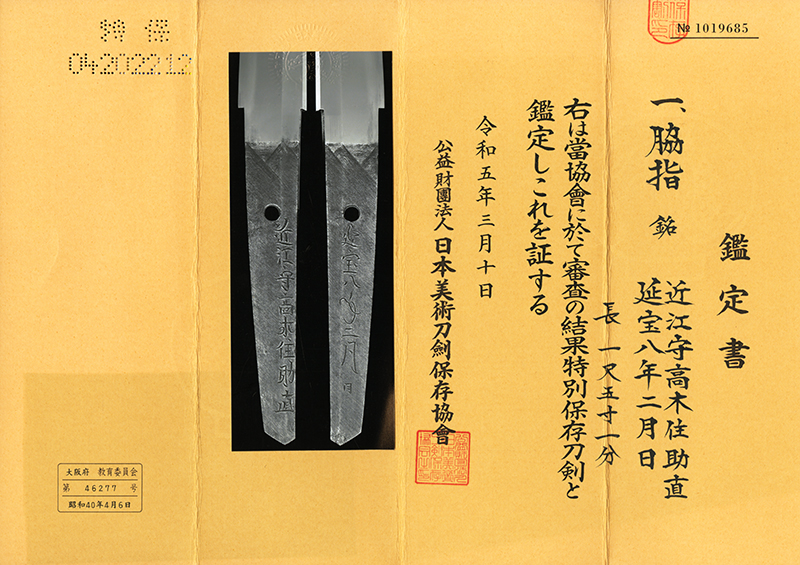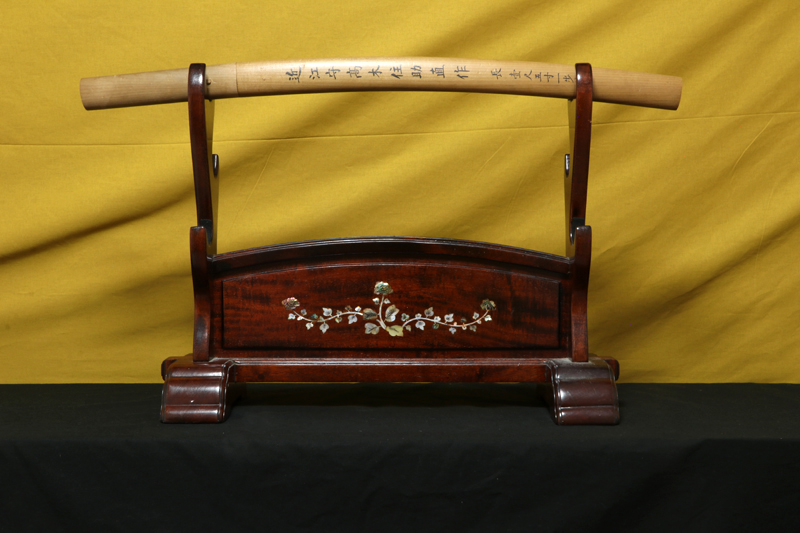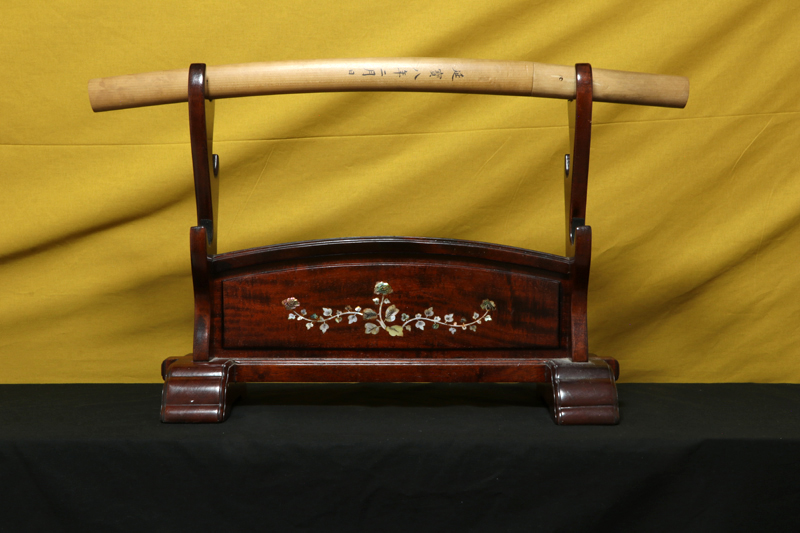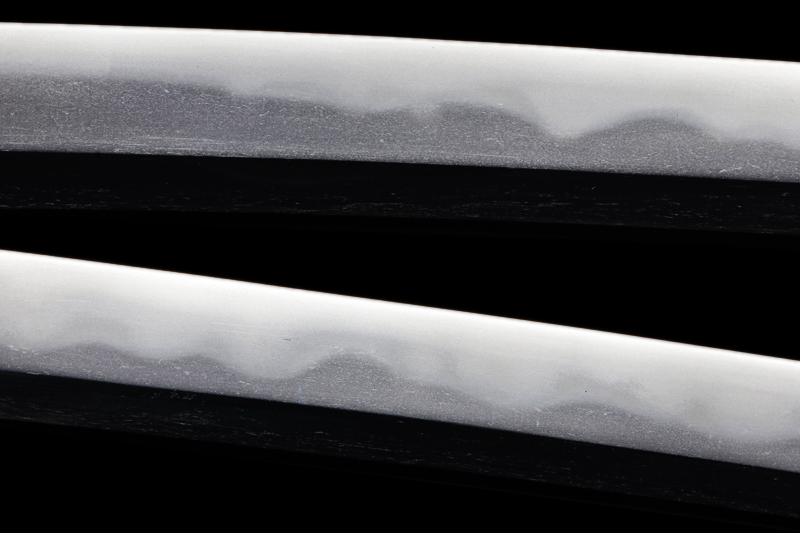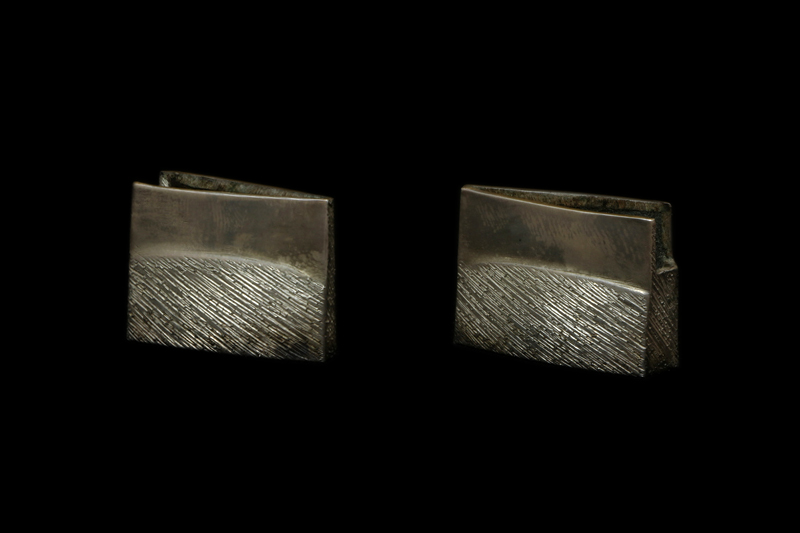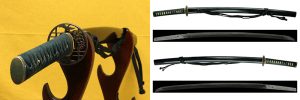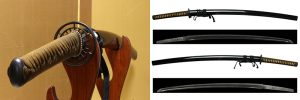説明
「刀姿 sword figure」
体配は鎬造り庵棟、身幅重尋常、鳥居反り中鋒。茎は生で化粧鑢がかかり、茎尻は栗尻。
「地鉄 jigane」
地鉄は小板目に杢目が交じりった鍛肌が良く詰み、地沸厚く付く。
「刃紋 hamon」
刃紋は大互の目乱れ、匂い深く小沸が厚くついて刃中は明るく冴え、足、金線、湯走り、砂流しなどが盛んに働く。鋩子は乱れ込み履き掛け小丸に返る。
「特徴 detailed」
大坂新刀を代表する津田近江守助直は、寛永十六年に江州野州郡高木村に生まれ、名は孫太郎と云います。大阪に出て二代助廣に入門。後にその助廣に妹婿となり、延宝三年より津田性冠し、同名を切り添えるようになります。銘は、近江国助直、近江守助直、近江守高木住助直、津田近江守助直、津田近江守助直 江州高木などと切ります。作風は師、助廣の創始した濤乱刃を得意とします。他に互の目乱れや湾れや、直刃も焼きますが、そのいずれもが上手で一般的に匂が深く小沸がよくつき、匂口が明るく冴えるもので、中には師の助廣に迫る作もあります。作刀にみる年紀は、寛文八年が最も古く、元禄六年、五十五歳時の作が最終となります。
本作、延宝八年二月日の裏年期が入り、銘の字体はやや丸字で、大互の目乱れを焼いた素晴らしい脇差です。
Tsuda Ōmi no Kami Sukenao, a prominent swordsmith of the Osaka Shintō tradition, was born in 1639 (Kan’ei 16) in Takagi Village, Yasu District, Ōmi Province. His given name was Magotarō. He moved to Osaka and became an apprentice under the second-generation Sukehiro. Sukenao later married Sukehira’s sister, becoming his brother-in-law, and in 1675 (Enpō 3), he adopted the Tsuda family name, adding it to his signature. His sword inscriptions include “Ōmi no Kuni Sukenao,” “Ōmi no Kami Sukenao,” “Ōmi no Kami Takagi-jū Sukenao,” “Tsuda Ōmi no Kami Sukenao,” and “Tsuda Ōmi no Kami Sukenao Gōshū Takagi.”
His style followed his teacher Sukehiro’s renowned tōranba (large wave patterns in the tempering), but he also crafted gunome midare (irregular undulating patterns), notare (gentle wave patterns), and straight tempering (suguha). All of these styles were executed skillfully, characterized by deep nioi and fine ko-nie, resulting in a bright and clear nioiguchi (temper line). Some of his works approach the level of his teacher Sukehiro.
The earliest date found on his works is from 1668 (Kanbun 8), and his final work dates to 1693 (Genroku 6), when he was 55 years old. This particular piece, a wakizashi dated February 1680 (Enpō 8), features a rounded signature style. The blade showcases a magnificent ō-gunome midare (large, irregular undulating pattern) hamon, highlighting Sukenao’s exceptional craftsmanship.
「拵 Koshirae」
白鞘。
ハバキ(habaki) :素銅地銀着一重。
「刀剣の状態 condition of blade」
研:良好です。
傷:欠点に成るような傷は有りません。
